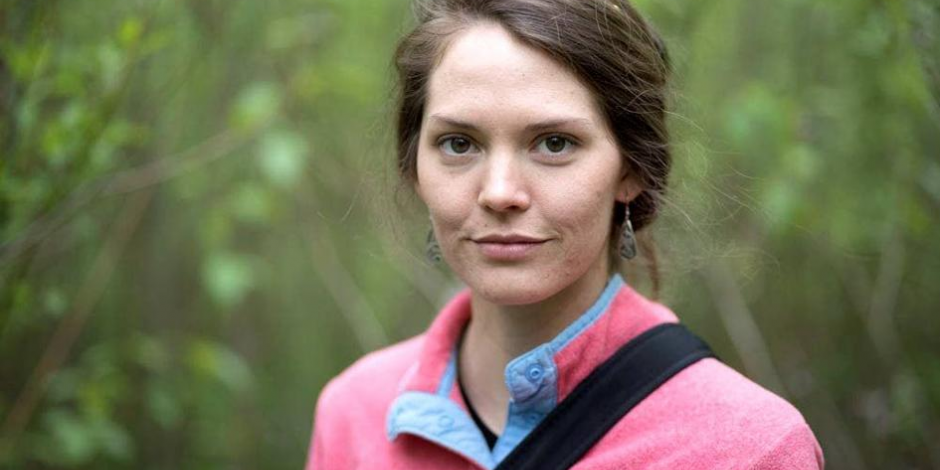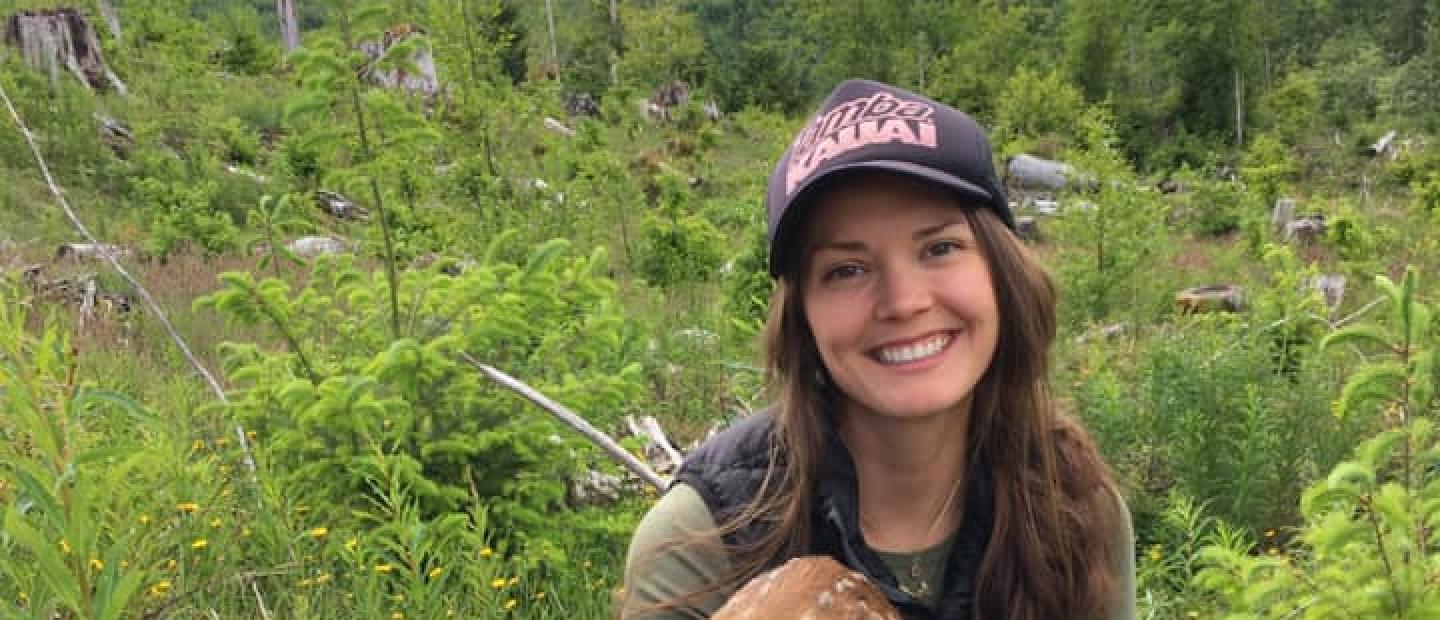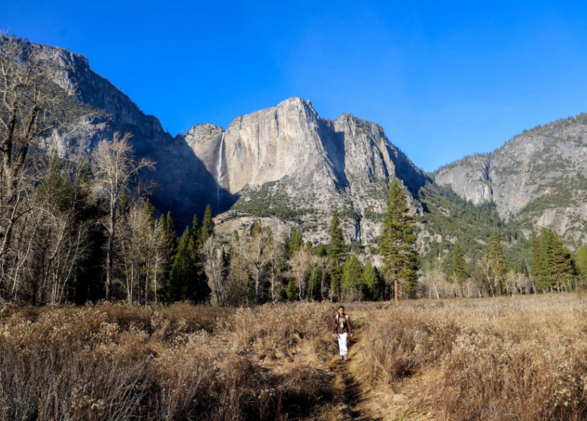Student to Steward: Cameron Macias

When she was a child on the Lower Elwha Klallam Tribe’s reservation, Cameron Macias would listen to her grandmother tell tales of 100-pound salmon swimming up the Elwha River. Her grandmother would talk about the hundreds of thousands of fish that filled the free waters, and she would lament how it all changed when the Elwha River dams were constructed in 1913.
The construction of the two dams violated the 1855 Point No Point Treaty, which protected Elwha fishing rights to the river in perpetuity. They also blocked passage to salmon spawning grounds, devastated the local aquatic wildlife populations and reduced the 100-pound salmon to mere myth.
It took nearly 100 years and the largest dam removal project in U.S. history to right this environmental and moral wrong; a wrong that influenced Cameron Macias to pursue a career in environmental science on the very land where she grew up. Kim Sager-Fradkin is a wildlife program manager for the Lower Elwha Klallam Tribe and was Cameron’s mentor, inviting her to become involved as part of Cameron’s graduate studies.
“It’s been such a joy watching Cameron grow from a super bubbly and enthusiastic young intern with literally zero field experience (except for what she gained at NatureBridge when she was 11!), to a thriving young scientist working towards a PhD in conservation science,” says Kim.
We interviewed Cameron, a NatureBridge alumnus and graduate research assistant at the University of Idaho studying wildlife on the Lower Elwha Klallam Tribe reservation, for our #50StoriesFor50Years series:
What was your relationship to the outdoors when you were growing up?
I grew up in Port Angeles on the Lower Elwha Klallam Tribe reservation, and I was always outside. When I was young I had two sets of clothes: school clothes and play clothes. I’d have to change clothes immediately when I got home from school because I was always getting dirty.
Your grandmother talked about the Elwha River wistfully; how did she feel about the dams?
She wasn’t protesting or anything, but she wanted to see the dams removed. The Lower Elwha was in a valley, so there was a fear of the dams breaking and flooding the entire reservation. My grandma also had such vivid memories of huge, abundant salmon in the river when she was a child [before the dams’ construction]. Somehow, her views didn’t cause any conflict with my grandfather, who worked for the dams.
It’s been such a joy watching Cameron grow from a super bubbly and enthusiastic young intern with literally zero field experience (except for what she gained at NatureBridge when she was 11!), to a thriving young scientist working towards a PhD in conservation science.Kim Sager-Fradkin, wildlife program manager, Lower Elwha Klallam Tribe
Your grandfather worked for the dams?
Yes, my grandmother was a tribal member and most of the tribe wanted the dams removed. My grandfather worked for the company that ran the dams his entire career. They were on opposite ends of the spectrum. My grandfather was really proud of the dams. He said they should at least keep a piece of the dams if they decided to remove them, which they did.
The Elwha and Glines Canyon dams were removed between 2011 and 2014 in the largest dam removal project in U.S. history. What does it mean to you to have the Elwha River flowing freely again?
It wasn’t until I went to university and started learning about the environment that I actually formed a strong opinion on the river. The dams were gone by the time I came back from the University of Hawaii in 2014 and started work as a wildlife technician on the reservation. It wasn’t until then that I learned that the tribe’s creation site was actually inundated and destroyed by the creation of the dams; a very important site to the Klallam people was buried underwater. Before coming back to the Olympic Peninsula though, I didn’t really have a strong opinion.
So you spent a lot of time in Olympic National Park as a child, playing outdoors on your own, exploring and later studying wildlife. You also discovered NatureBridge there. What was your first program experience like?
I was 11 years old when we went to NatureBridge with about half our class. This was back in 2001. We went out there for a week or so and it was such a fun time. There was team-building and trust falls and we learned outside every day. One of the things I remember so clearly is that NatureBridge invited a Jamestown S’Klallam storyteller to come speak. Her name was Elaine Grinnell and she’s a well-known storyteller. I actually knew her, which was cool as a sixth grader to be like, “Elaine! I know you!”

What stories did she tell?
She told a few stories. We were all gathered around her, some kids in chairs, some sitting on the floor — and I remember her telling us a S’Kallam story about Slapu. Slapu is this old woman who brings kids into the forest who misbehave. It was supposed to be a fun, scary story teaching kids to be good for their parents. We all loved it.
You’ve also been on the other side of that experience, having been a guest speaker to NatureBridge students.
Yes, I spoke to a group of students in Olympic who had traveled from the east coast. NatureBridge invited me because the students were particularly interested in wildlife and I’d been a wildlife technician for the Lower Elwha Klallam Tribe since 2014.
What experiences were you able to share with these students?
I took a very non-traditional route. My family didn’t have any environmental background. I got my Bachelor’s at 27. I interned. It took me a while to figure it out and find something I really loved. I told them there’s so many different routes, and I talked about all the different projects we’re working on — studying the recolonization of lake beds, cougar populations, a deer mortality project — I think it gave them an example of someone taking a different path and also just the variety of things you can do as a wildlife biologist.
What are you working on right now?
Thanks in part to Kim Sager-Fradkin writing a grant and inviting me to be the grad student participant, I’m able to keep doing what I love as a graduate research assistant at the University of Idaho. I’m still a wildlife technician, too, and one of the things I’m trying to do is learn about the predator populations in the Elwha Tribe’s historic use area. Cougars and bobcats have never been studied in my tribal area, so we’re estimating population size using genetics and utilizing a lot of non-invasive detection technologies.
What does it mean to you to be able to study on the land where you grew up?
As a [Lower Elwha Klallam Tribe] wildlife technician, I saw the revegetation of former lake beds after the dams were removed. Our project was to study how birds and deer and elk and bears were returning and using the dry lake bed as it transformed with the revegetation of native plants. Watching the change over three years was one of the coolest things. There were trails when I first arrived that had these tiny trees, and now they’re these lush, riparian forests. With more trees, there’s more wildlife. It’s a true change over time.
NatureBridge is celebrating 50 years, and we’re looking ahead to the next 50. As a boots-on-the-ground biologist, what is it about NatureBridge that you see as vital for the next 50 years of environmental stewardship?
To me, it comes down to caring. You can’t force people to care. We hear scientists say what we should do all the time but...it’s really when you have exposure to something that you care more about it.
Check out the film Cameron is featured in, Think Like A Scientist: Renewal.

